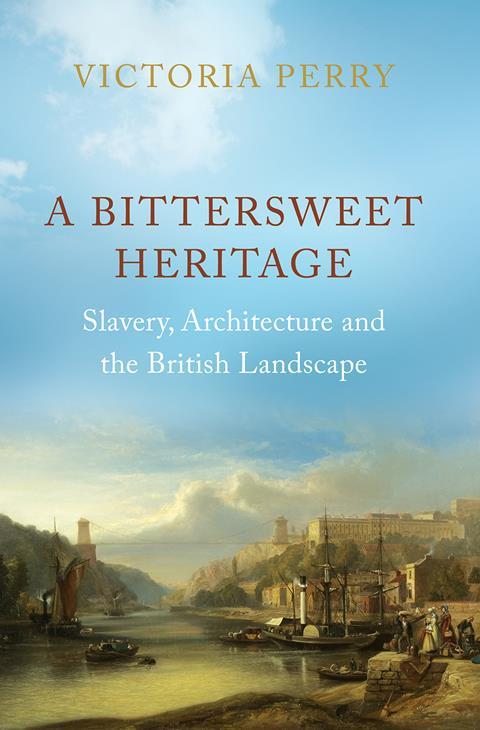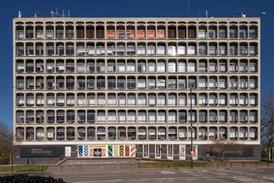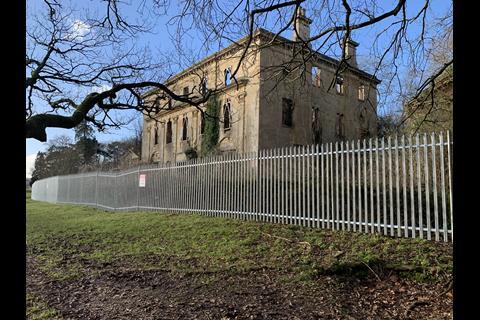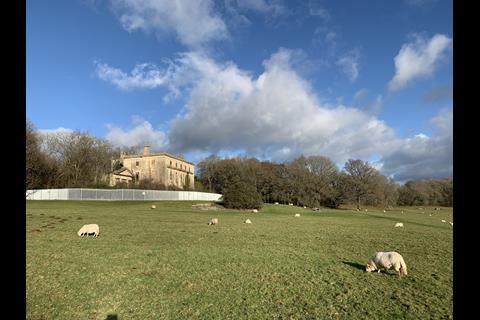Jeremy Musson finds that a new book on architecture and slavery is informative, but wonders where it leaves the debate about how to manage the built heritage that is its legacy

A Bittersweet Heritage by Victoria Perry is an account of some of the wealth which poured into the British landed estates from the West Indies, directly as a result of Britain’s Caribbean slave-based economy - principally sugar cultivation, but also from the slave trade itself.
Few people with a serious interest in heritage and historic architecture – and the artistic and cultural significance of the country house – will not be aware of this difficult history today, but Dr Perry’s carefully researched and highly readable narrative, provides a thorough and insightful investigation of a number of inter-related themes for anyone wishing to understand these relationships better.
The stark – hideous – reality of the role of historic slavery in the West Indies is clear. Perry quotes the Interesting Narrative of Olaudah Equiano, first published 1789. A former slave, who was later freed and lived in England, Equiano describes his experiences: his capture in his homeland of Benin, the slave ships which crossed the Atlantic, the fear and the horror and the grinding cruelty which followed.
Curiously even within his quoted memoir can be found a recollection of how different the buildings of Barbados (in brick and in storeys) looked to the buildings he knew in Africa, which reminds us how buildings speak of place, time, culture and contrasts.
With notable exceptions, such as Equiano, we have a limited number of written accounts from those subjected to slavery’s cruelty – a reflection of the way in which the voices of the enslaved have historically been suppressed and negated. And pitifully few eighteenth-century British visitors to the West Indies seem to have recognised or recorded the true horror of slavery, although there were some.
When those who owned these plantations had made their fortune, many sunk their wealth into establishments in Britain
Perry quotes a 1745 letter of one planter, George Maxwell, to a young friend who had quit the islands. “I am extremely sorry, dear sir, at the many disappointments you had found,” writes Maxwell. Acknowledging his young friend’s horror at the treatment of the slaves, he adds, “I might have foreseen, had I considered, [this] would ill suit the gentleness of your nature”, admitting that he had, over so many years, simply hardened himself to it.
The campaign to end slavery won in the end, with the trade stopped in 1807, and the practice itself outlawed in 1833. The early nineteenth-century compensation of slave owners has been much discussed, but as Dr Perry notes, no compensation at all was given to any former enslaved person at the time.
When those who owned these plantations had made their fortune, many sunk their wealth into establishments in Britain, far away from the inhuman sources of their income. They then often employed the best and most admired designers and skilled artisans to deliver their dreams.
The book takes us through the story of the grandest of British country houses. There are those, like Yorkshire’s Harewood House, that are still the centre of great estates, while others such as Danson Park, close to London, are owned by local authorities. Some, like Piercefield, in Monmouthshire, Wales, are mournful ruins in beautiful countryside.
Whether you agree that Adam’s plasterwork designs for Harewood might be read as a reference to the elegant sugar confections of the eighteenth-century dining table, is one thing. However, the ubiquitous presence of mahogany, doors, stair rails and furniture, in country houses of this period, clearly derives from the export of this timber from the Caribbean colonies – in 1768 alone, 443,930 ft of mahogany was exported from Jamaica to Britain.
Dr Perry also addresses the complexity of the story of the elegant city of Bath, a world heritage site of widely acknowledged beauty and without doubt the social and cultural capital of the west of England in the eighteenth century.
She shows how the city’s development was helped by the investment of wealth derived from the slave economy and sugar plantations; the major west of England ports, Bristol and Liverpool, also grew on this investment, as well as many of the country houses and estates in their hinterlands, built by connected merchant-traders and others.
Dr Perry traces the influence of Caribbean-sourced fortunes on the evolution of the idea of the naturalised landscape in Britain in a critical period; a subject which has received much less attention than the bricks and mortar - or ashlar and stuccowork - of Britain’s fine country houses.
Piercefield in Wales was especially admired and significant, and was the project of wealthy Valentine Morris, an Antiguan-born “absentee” plantation owner, who pioneered a new approach to landscape and “used the topography of his estate to change the way people perceived the places and industries along the River Wye”. Contemporary visitor Arthur Young, called the Piercefield walks and views “exquisite”.
Perhaps Dr Perry does not quite answer some of the questions which appear to have inspired the book
Dr Perry juxtaposes evidence for the latter, with another less familiar story. In the 1760s and 1770s, British artists, such as George Robertson and Thomas Hearne and an Italian, Agostino Brunias (who worked for Robert Adam), travelled to the Caribbean.
They recorded the “picturesque” Claudian qualities of the islands’ landscapes, creating a picture of an “idyllic land of ease and plenty” rather than “a slave colony producing cash crops in the harshest condition for export”. This was part of a desire of some plantation owners to provide visual propaganda in defence of their economy.
This well-researched book is a good route to try and understand the way in which the fortunes derived from these slave-based economies helped shape the British country house and landscape.
Perhaps Dr Perry does not quite answer some of the questions which appear to have inspired the book: namely just how do we deal with the heritage of elite and beautiful buildings, cities and landscapes, or any work of art, which are the result of these historic Caribbean slave-based economies?
It is a very tough one to resolve, but how the heritage sector does its best by this “bittersweet heritage” is an important and testing question for all our shared futures.
Postscript
A Bittersweet Heritage: Slavery, Architecture and the British Landscape by Victoria Perry is published by Hurst.
Jeremy Musson is an architectural historian and consultant.
Victoria Perry is a historian, and an architect and director at Donald Insall Associates. She contributed to the Oxford Companion to Black British History and English Heritage’s Slavery and the British Country House.


















No comments yet